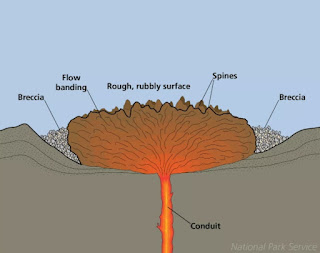Valcanos.
Volcanoes: Nature's Majestic Powerhouses.
Volcanoes, nature's awe-inspiring spectacles, are awe-inspiring reminders of the Earth's dynamic inner workings. These vents in the Earth's crust allow molten rock, known as magma, to escape from the planet's interior, creating a mesmerizing blend of power and beauty. Their eruptions can be both destructive and transformative, shaping landscapes and influencing ecosystems.At the heart of every volcano lies a magma chamber, a reservoir of molten rock heated by the Earth's internal energy. This molten rock, composed of a mixture of minerals, is under immense pressure, constantly seeking an escape route to the surface. When the pressure builds beyond the confining forces of the Earth's crust, a volcanic eruption occurs.
Eruptions vary in their intensity and style, ranging from gentle lava flows to explosive blasts that send ash and debris high into the atmosphere. The type of eruption depends on the composition of the magma, the amount of dissolved gas, and the structure of the volcano.
During effusive eruptions, lava flows out of the volcano like a fiery river, spreading across the landscape and solidifying into new landforms. These flows can be slow-moving and relatively non-explosive, but they can still pose a significant threat to nearby communities and infrastructure.
The Impact of Volcanoes
Despite their destructive potential, volcanoes play a crucial role in shaping the Earth's surface. They create new land, enrich soils with essential minerals, and contribute to the formation of geothermal energy sources. Their eruptions can influence climate patterns and even trigger tsunamis.
Volcanoes pose a significant threat to populations living in their vicinity. However, with advances in volcanic monitoring and forecasting, communities have become more resilient in the face of these natural hazards. Early warning systems and evacuation plans can help mitigate the impact of eruptions, saving lives and protecting property.
here are the four main types of volcanoes.
Cinder Cones.
Cinder cones are the simplest type of volcano. They are steep, conical mountains built up from the accumulation of cinders, small fragments of lava that are thrown into the air during explosive eruptions. Cinder cones are typically less than 1,000 feet (300 meters) tall and have a bowl-shaped crater at their summit.
Composite Volcanoes (Stratovolcanoes)
Composite volcanoes, also known as stratovolcanoes, are the most common type of volcano. They are built up from alternating layers of lava and ash, forming steep, conical mountains. Composite volcanoes are often referred to as "stratovolcanoes" because of their layered structure. They can be much taller than cinder cones, reaching heights of over 10,000 feet (3,000 meters).
Shield Volcanoes.
Shield volcanoes are the largest type of volcano. They are characterized by their broad, gently sloping sides, which resemble a shield. Shield volcanoes are built up from thin, fluid lava flows that spread out over a large area. They can be incredibly massive, with some reaching heights of over 30,000 feet (9,000 meters) and covering areas of tens of thousands of square kilometers.
Lava Domes.
Lava domes are small, dome-shaped structures that form over vents in volcanoes. They are built up from thick, viscous lava that flows slowly and accumulates around the vent. Lava domes can be dangerous because they can collapse, causing landslides and lahars, which are mudflows of volcanic debris.
1.Kilauea, Hawaii
2.Nyamuragira, Democratic Republic of the Congo
3.Stromboli, Italy
4.Fuego, Guatemala
5.Etna, Italy
6.Reventador, Ecuador
7.Soufrière Hills, Montserrat
8.Ulawun, Papua New Guinea
9.Pacaya, Guatemala
10.Merapi, Indonesia
11.Kelud, Indonesia
12.Krakatau, Indonesia
13.Eyjafjallajökull, Iceland
14.Mount St. Helens, Washington
15.Pinatubo, Philippines
16.Sakurajima, Japan
17.Galunggung, Indonesia
18.Colima, Mexico
19.Popocatépetl, Mexico
20.Fuji, Japan
Living with Volcanoes
Despite the potential dangers, many people choose to live near active volcanoes, drawn by their natural beauty and the fertile lands they create. However, it is essential to understand the risks associated with volcanic activity and be prepared for potential eruptions.
Volcano monitoring is crucial for predicting and mitigating volcanic hazards. Scientists monitor seismic activity, gas emissions, and ground deformation to assess the likelihood of an eruption.
Early warning systems can provide timely alerts to communities in danger, allowing them to evacuate safely.
Volcano preparedness education is essential for raising awareness about volcanic risks and promoting appropriate safety measures.
Volcanoes are powerful reminders of the Earth's dynamic nature. While they can pose significant threats, they also play a vital role in shaping our planet's landscapes and ecosystems. By understanding volcanic processes and implementing effective risk mitigation strategies, we can coexist with these fiery mountains and appreciate their unique beauty and power.








Comments
Post a Comment